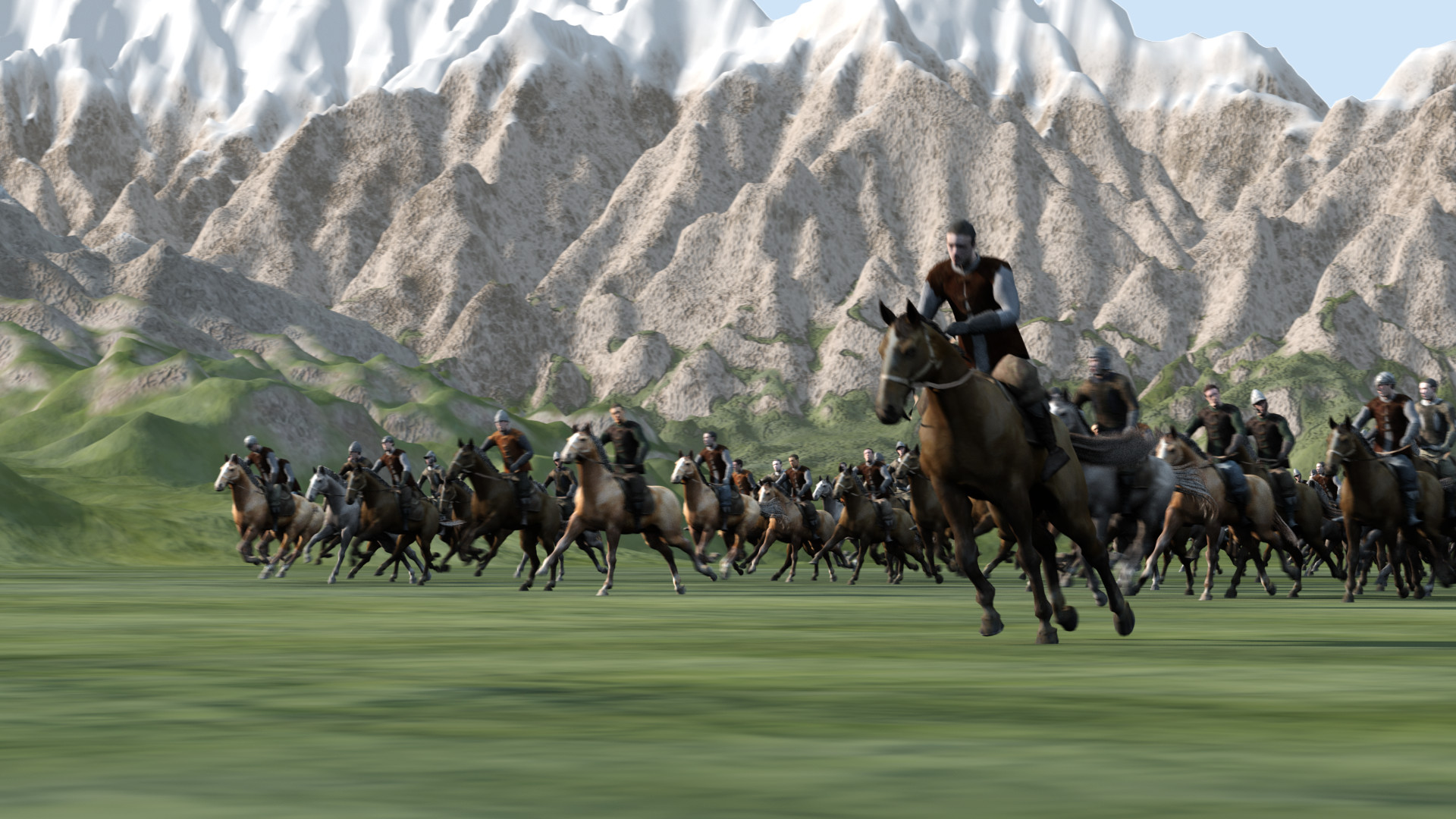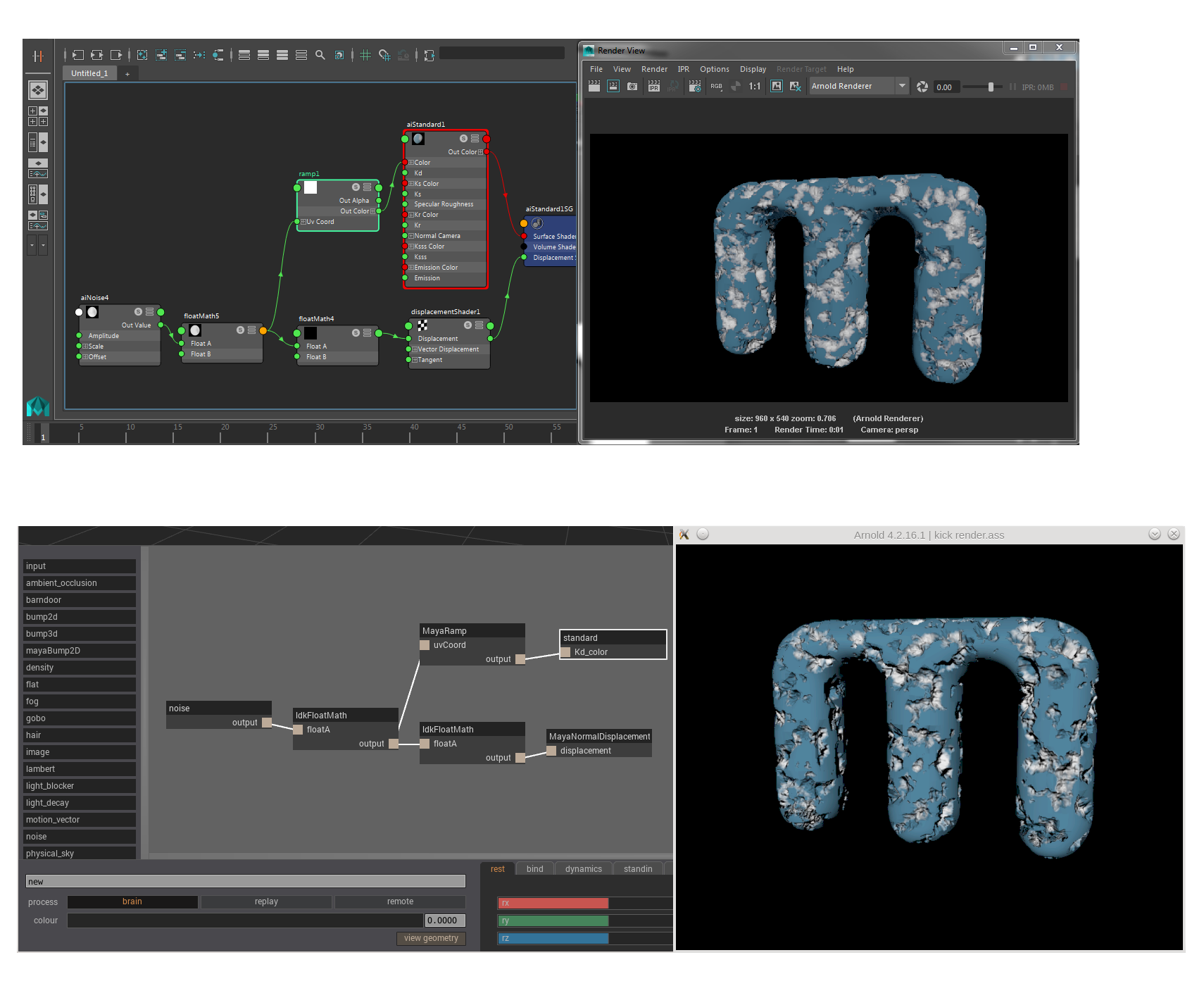By IAN FAILES
By IAN FAILES

Ask anyone about the visual effects breakthroughs in Peter Jackson’s Lord of the Rings trilogy and there’s a good chance they will recall the sweeping army battles inside Middle Earth. These battles were made possible, in part, by Stephen Regelous’s Massive autonomous crowd simulation software developed at Weta Digital.
Since that time, Regelous has developed Massive as a standalone product, but the software continues to attract a high degree of ‘buzz’ harkening back to the Lord of the Rings days. And it also continues to be refined. At SIGGRAPH 2017, Massive announced it was introducing a ‘Horse & Rider Agent’ into the mix. At the conference, VFX Voice sat down with Regelous to ask him about how that new agent was implemented.
VFX Voice: Why did you want to include a horse and rider agent in Massive?
Regelous: Massive isn’t just about people. You tend to think crowds of people, but it’s been used for birds, and it’s been used for everything, even snakes. So, when I was working on Lord of the Rings the Massive department was building all kinds of agents, and probably the most impressive one was the horse and rider agent, which featured prominently in the Pelennor Fields in Return of the King. They flew over four Arabian horses from Sydney. They had two weeks of mo-cap in the sound stage with Giant Studios, as it was called then, and it was an epic piece of technological wonder creating those horse agents.
 Massive Founder Stephen Regelous
Massive Founder Stephen Regelous“Massive isn’t just about people. You tend to think crowds of people, but it’s been used for birds, and it’s been used for everything, even snakes. So, when I was working on Lord of the Rings the Massive department was building all kinds of agents, and probably the most impressive one was the horse and rider agent, which featured prominently in the Pelennor Fields in Return of the King. … It was an epic piece of technological wonder creating those horse agents.”
—Stephen Regelous, Massive Founder
I didn’t personally have anything to do with that, but what came out of it was quite amazing, and I’ve spent a lot of time talking with John Haley, who was the artist who was mostly behind creating those horses. He supervised all the capture. He designed all the motion. He created the Massive ‘brains,’ and he did a lot of the shots.
So I wanted to be able to do something like that because a lot of people think that I took all of the agents from Lord of the Rings and now we have them in the software. We don’t. We made all our own agents, because I wanted to be very clear about who owns what.
I thought we really had to do our own horse agent right from the start, but it’s a huge undertaking. I mean, you’re talking about $100,000 just for the mo-cap, and that’s before you even get it processed. That’s just to go out there and capture a horse, and you’ve got to pay for the horse or horses because you can’t use the same horse all the time, so I knew it was going to cost a lot of money, and you’ve got to do it right because when you’re just working on a film, and you get something wrong on the mo-cap stage, well okay, too bad. You’re going to have to go back and do it again, but you’re not personally going to pay for that. With this horse, I knew I had to get it right because I can’t afford to do it twice!
VFX Voice: How did you approach the motion capture in the end?
Regelous: One of the hardest things was finding a sound stage big enough for this. I asked Profile Studios for help. Actually, it took about a year, and then eventually they came back and said, actually, Jim Cameron’s Lightstorm Entertainment stage is not busy, and that’s got the best cameras in the world and about 150 of them and it’s huge. But even being that huge I said we still need to do some stuff outside because horses aren’t going to give us that really full-on gallop that you’d need. So we did a day at the Lightstorm stage. We did a day at the ranch where the horses come from, and we got everything we wanted. It went incredibly well.
Then there’s still a lot of work after that because then I’ve got hours and hours of video where I have to go through frame by frame picking the right frames for every one of the approximately 180 actions that we captured, and that in itself is months of work. You have to compile a video for each of the 180 actions to get the best bits and choose which one had their feet in the right place and the right momentum and didn’t turn too much. It’s a lot of work.
“With this horse, I knew I had to get it right because I can’t afford to do it twice!”
—Stephen Regelous, Massive Founder

So now we’ve got about half of them processed back from Profile, and we prioritized the ones that enable us to connect out the whole motion tree so that the agents are able to get around all of those things, so they can canter, gallop, stop, and rear up. They can do all of these things, and they can go from any one part of the tree to any other part.
“I’ve got hours and hours of video where I have to go through frame by frame picking the right frames for every one of the approximately 180 actions that we captured, and that in itself is months of work. You have to compile a video for each of the 180 actions to get the best bits and choose which one had their feet in the right place and the right momentum and didn’t turn too much. It’s a lot of work.”
—Stephen Regelous, Massive Founder
VFX Voice: How does using the horse and rider agent in Massive differ from a normal agent, from an artist’s perspective?
Regelous: From an artist’s perspective, it barely is any difference at all, because when you build an agent you also build a list of things called ‘agent variables,’ which are basically your high-level controls of the agent. They may be controlling things such as variation – different saddles or different kinds of texture maps on them, or whatever it is that you want to vary throughout the scene.
You control that with agent variables, but you also control behavior with agent variables. How likely they are to want to be fighting because we’ve got guys on their backs who can fight. How likely they are to want to run or walk or trot or canter. So you’ve got these high-level controls that you build into the agent when you make the agent, and then you just specify those on a per-shot basis.
The Horse & Rider agent is still in development, but Regelous says it will be available soon.